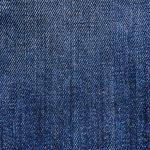Looking to make informed choices when it comes to textiles? Look no further! In this article, we’ll give you six essential tips for evaluating textile quality.
From considering fiber content to examining thread count, fabric weight, construction techniques, colorfastness, and durability, we’ve got you covered.
With these tips, you’ll be able to confidently assess the quality of any textile and make the right decisions for your needs.
So let’s dive in and become a savvy textile evaluator!
Table of Contents
Fiber Content
When evaluating textile quality, it’s important to consider the fiber content, as this will greatly impact the durability and performance of the fabric. The strength of the fiber is a crucial factor to examine. Different fibers have varying levels of strength, with some being more robust than others. For instance, natural fibers like cotton and silk tend to have lower fiber strength compared to synthetic fibers such as polyester and nylon. Fiber strength is significant because it determines how well the fabric can withstand wear and tear, ensuring its longevity.
Another aspect to consider is the fabric drape. This refers to how the fabric hangs or falls when draped over a surface or on the body. The fiber content plays a significant role in determining the drape of the fabric. Fabrics made from natural fibers like silk and rayon tend to have a more fluid and graceful drape, while fabrics made from synthetic fibers like polyester and spandex tend to have a stiffer drape. The drape of the fabric is essential as it affects the appearance, comfort, and functionality of the garment.
Thread Count
To evaluate textile quality, consider the thread count of the fabric. Thread count refers to the number of threads per square inch of fabric and is an important factor in determining the overall quality and durability of the textile. Here are three key points to keep in mind when evaluating thread count:
-
Higher thread count doesn’t always mean better quality: While a higher thread count can indicate a denser weave and potentially greater durability, it doesn’t necessarily guarantee superior quality. Other factors such as thread quality and fabric smoothness also play a significant role in determining the overall textile quality.
-
Thread quality matters: The quality of the individual threads used in the fabric greatly impacts its overall strength and longevity. Look for textiles that use high-quality threads to ensure that the fabric will withstand regular use and washing without fraying or unraveling.
-
Fabric smoothness can be affected by thread count: A higher thread count can contribute to a smoother and more luxurious feel of the fabric. However, it’s important to note that fabric smoothness can also be influenced by factors such as the type of fiber used and the finishing processes applied to the fabric.
Fabric Weight
When evaluating textile quality, understanding fabric weight is essential. The weight of a fabric can greatly impact its performance and durability.
Factors such as the type of fiber, the weave, and the finishing treatments can all affect the fabric weight.
Importance of Fabric Weight
Evaluate fabric weight to determine its importance in textile quality.
The fabric weight refers to the heaviness or thickness of the fabric. It’s an essential factor to consider when evaluating textile quality as it directly affects the fabric’s performance and durability.
Here are three reasons why fabric weight is important:
-
Durability: Fabrics with a higher weight tend to be more durable and long-lasting. They can withstand wear and tear better, making them ideal for items that require frequent use.
-
Insulation: Fabric weight also affects its insulating properties. Heavier fabrics provide better insulation, keeping you warm in colder temperatures.
-
Fabric Handling: The weight of the fabric influences how it drapes and hangs. Lighter fabrics have a softer drape, while heavier fabrics have a stiffer feel. Understanding the fabric weight helps you choose the right fabric for your desired design and functionality.
Considering fabric weight alongside other quality factors will help you make informed decisions when selecting textiles for your projects.
Factors Affecting Fabric Weight
You can understand the factors that affect fabric weight by considering various elements in the textile manufacturing process.
Fabric thickness and fabric density are two key factors that contribute to the overall weight of a fabric. Fabric thickness refers to the distance between the two surfaces of the fabric, while fabric density refers to the number of fibers per unit area. Generally, fabrics with a greater thickness and higher density will have a heavier weight.
The thickness of the fabric can be influenced by factors such as the type of fibers used, the weaving or knitting technique, and the finishing processes applied. Similarly, fabric density can be affected by factors like the yarn count, the tightness of the weave or knit, and the presence of any additional layers or coatings.
Understanding these factors can help you determine the weight and quality of a fabric.
Construction Techniques
When evaluating textile quality, it’s important to consider the construction techniques used. Pay attention to the stitching and seams, as well as the weaving and density of the fabric.
Additionally, take note of the fabric finishing techniques employed. These factors can greatly impact the durability, appearance, and overall quality of the textile.
Stitching and Seams
To assess the quality of textiles, pay attention to the stitching and seams used in their construction. The stitching quality and seam strength can greatly impact the durability and longevity of the garment or fabric. Here are three key factors to consider when evaluating the stitching and seams:
-
Stitching Quality: Examine the stitches closely to ensure they’re even, straight, and secure. Loose or uneven stitches can lead to unraveling and fraying over time.
-
Seam Strength: Check the seams for tightness and reinforcement. Strong seams will withstand stress and prevent tearing or splitting, especially in high-stress areas like shoulder seams or waistbands.
-
Finishing Techniques: Look for clean and tidy finishing techniques, such as serging or binding, which indicate attention to detail and professional craftsmanship.
Weaving and Density
Examine the weave and density of the fabric to determine its quality and durability.
Weaving techniques play a crucial role in the overall quality of a textile. Different weaving techniques, such as plain weave, twill weave, and satin weave, have distinct characteristics that affect the fabric’s strength and appearance. For example, plain weave is simple and durable, while twill weave creates a diagonal pattern and provides flexibility.
Additionally, the fabric density, or the number of yarns per square inch, is another important factor to consider. Higher fabric density generally indicates a stronger and more durable fabric. To evaluate fabric density, hold the fabric up to the light and observe how closely the yarns are woven together. The tighter the weave, the higher the fabric density, and the better the quality.
Fabric Finishing Techniques
To assess the quality of a textile, pay attention to the fabric finishing techniques employed during construction. These techniques can greatly impact the durability, appearance, and overall quality of the fabric. Here are three important aspects to consider:
-
Fabric dyeing techniques: The method used to dye the fabric can affect its color vibrancy, colorfastness, and resistance to fading. Some common dyeing techniques include vat dyeing, reactive dyeing, and pigment dyeing. Look for fabrics that have been dyed using high-quality techniques for long-lasting color.
-
Fabric printing methods: Printing on fabric can add intricate patterns and designs. The printing method used can impact the clarity, color saturation, and durability of the print. Techniques such as screen printing, digital printing, and heat transfer printing are commonly used. Choose fabrics that have been printed using reliable methods for crisp and long-lasting designs.
Colorfastness
When evaluating textile quality, it’s important to check for colorfastness. Colorfastness refers to the ability of a fabric to retain its color when exposed to various conditions such as washing, sunlight, and friction.
To determine colorfastness, you should consider two key factors: stain resistance and dye penetration.
Stain resistance refers to how well a fabric resists the absorption of stains. A colorfast fabric should have a protective layer that prevents stains from penetrating the fibers. This is especially important for textiles that are prone to spills or accidents, such as upholstery or children’s clothing. By choosing a fabric with good stain resistance, you can ensure that it will maintain its original color and appearance even after being exposed to common household stains.
Dye penetration, on the other hand, refers to how well the dye is absorbed and distributed throughout the fabric. A colorfast fabric should have consistent color throughout its entire surface, without any patchy or faded areas. To test the dye penetration, you can rub a white cloth against the fabric to see if any color transfers. If the fabric passes this test, it’s likely to retain its color vibrancy over time.
Durability
To assess the durability of a textile, consider its fabric strength and resilience. Durability testing is an important aspect of evaluating textile quality, as it determines how well a fabric will withstand wear and tear over time. Here are three factors to consider when evaluating the durability of a textile:
-
Fabric Strength:
The strength of a fabric is crucial in determining its durability. A strong fabric is less likely to tear or develop holes, making it more resistant to damage. To evaluate fabric strength, you can perform tests such as the grab test or the tear test, which measure the fabric’s ability to withstand tension and tearing forces. -
Resilience:
Resilience refers to a fabric’s ability to bounce back to its original shape after being stretched or compressed. A resilient fabric will maintain its structure and appearance even after repeated use and washing. To assess resilience, you can perform tests such as the recovery test, which measures how well a fabric recovers its shape after being stretched. -
Durability Testing:
In addition to evaluating fabric strength and resilience, conducting durability testing is essential to determine how well a textile will perform in real-life conditions. Durability tests simulate various types of wear and tear, such as abrasion, pilling, and color fading, to assess the fabric’s long-term performance.
Frequently Asked Questions
How Do I Determine the Origin of the Textile Fabric?
To determine the origin of a textile fabric, you can start by examining the manufacturing process. Look for any labels or markings that indicate the country of origin. This will give you insight into where the fabric was made.
Are There Any Specific Care Instructions for Maintaining the Textile’s Quality?
To maintain the textile’s quality, follow specific washing instructions and recommended cleaning methods. These will help you care for the fabric properly and ensure its longevity.
Can the Fabric Shrink or Stretch After Washing?
Yes, the fabric can shrink or stretch after washing. This can affect the fabric durability and overall quality. It’s important to follow the care instructions to minimize these effects.
Does the Fabric Have Any Certifications or Eco-Friendly Labels?
Does the fabric have any certifications or eco-friendly labels? You should look for certifications and sustainability labels on the fabric to ensure it meets your eco-friendly standards.
Is the Textile Suitable for Specific Purposes, Such as Outdoor Use or High-Traffic Areas?
Is the textile suitable for outdoor use or high-traffic areas? Consider its outdoor durability and fabric for high traffic areas. Look for fabrics that can withstand harsh weather conditions and heavy use.
- Tetron Fabric for Marine Applications: Durability and Use Cases - June 18, 2025
- Tetron Fabric for Outdoor Furniture: Weather Resistance and Care - June 18, 2025
- Tetron Fabric for Wall Coverings: Style and Application Tips - June 18, 2025






